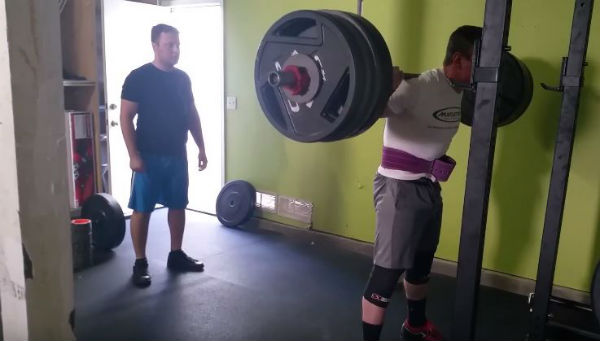
If you aren’t familiar already, the Bulgarian squat method falls under the Bulgarian style of training that revolves around the idea that very high frequency is the best way to train highly-specific movements like the clean and jerk and snatch.
Get the Bulgarian Method with included calculators delivered to your email immediately! Note that it is still highly recommended to read this article in full to understand how the program functions and how to properly use it to maximize your progress.
While this article focuses on the Bulgarian method for squatting, the same exact strategy and plan can be applied to the bench press and deadlift as well.
Be advised, however, that attempting to use the Bulgarian method for all three lifts at once is a recipe for overtraining and injury. For the best results, pick one (or two at most) and focus on them before rotating to the other lifts.
The training program was made famous by Bulgarian weightlifting coach Ivan Abadjiev. After winning Bulgaria’s first gold medal for weightlifting in 1957, he went on to become the head coach of the Bulgarian Weightlifting Federation for over 24 years.
While he created the program for weightlifting, it can also be used extremely effectively in powerlifting movements such as the squat and bench. It isn’t as ideal for the deadlift, however, where fatigue can cause your form to break down too much.
For squatting specifically, though, the Bulgarian squat method is extremely effective.
You can safely add 25-50 pounds to your max in close to one month’s time. This isn’t rare either.
However, to be able to do that you first need to build a base through variation and hypertrophy. This is best accomplished with the use of a powerlifting program that utilizes daily undulating periodization.
Once you have completed several training cycles of a muscle and strength training plan, you will then be able to capitalize on your results and transition to Bulgarian squatting to maximize your strength gains.
This works because, believe it or not, squatting is a highly technical movement. Your body has to move in just the right position or the bar will either fall off of your back or crush you underneath it. By performing squats every single day, you become highly proficient at squatting.
Not only that, your body’s ability to produce force—the neuromuscular connectivity that “ignites” and contracts your muscles—is a physiological phenomenon that becomes better when you train it. But it can only be trained through the use of high weights almost daily.
Bulgarian Squat Method Program
Each day, you should work up to a daily max. This is the heaviest weight that you can do without struggling or breaking form at all. It is also recommended that you do not get “hyped up” for your sets either—mental fatigue is a very real training factor that can make your recovery much harder.
Your goal should be to enter the gym, complete your warm-up, and hit your daily max as quickly as possible—don’t drag out your sets to hit a higher daily max. Again, it should be a weight that, while challenging, you can complete with strong form and un-hyped conditions.
Then, once you have found your daily max, you perform back-off sets based on that weight:
- 5 sets of 3 repetitions at 85% of your daily max
- 5 sets of 2 repetitions at 90% of your daily max
Alternate between the two styles of back-off sets each day. For example, if you perform 5×3 on Monday, do 5×2 on Tuesday, 5×3 on Wednesday again, and so on.
For a complete example, let’s say you enter the gym and work up to a daily max of 315 pounds. You would then complete 5 sets of 2 repetitions at 285 pounds (90% of 315 pounds). The following day, if you hit a daily max of 315 again, you would perform 5 sets of 3 repetitions at 270 pounds (85% of 315).
Your weekly schedule should only include 1 rest day max. John Broz has talked extensively on injuries while training with the Bulgarian squat method and believes strongly that taking days off is actually the best way to get injured.
He explains this is because of the body’s natural inflammation process. When you train every day, your entire body is fatigued. This means your muscles, tendons, cartilage, ligaments, and surrounding tissues are all sore and worked.
However, these muscles don’t recover at the same pace. When you take a rest day from squatting, your muscles are able to recover, but the connective tissues and tendons are not. This means when you go into the gym, you muscles will be able to lift the weight, but your supporting tissues won’t be able to—and you get injured.
While not for the faint of heart, squatting every day is an incredible way to quickly maximize your strength in the classic barbell movement and varying between high bar vs low bar squats can prove fruitful as well.
